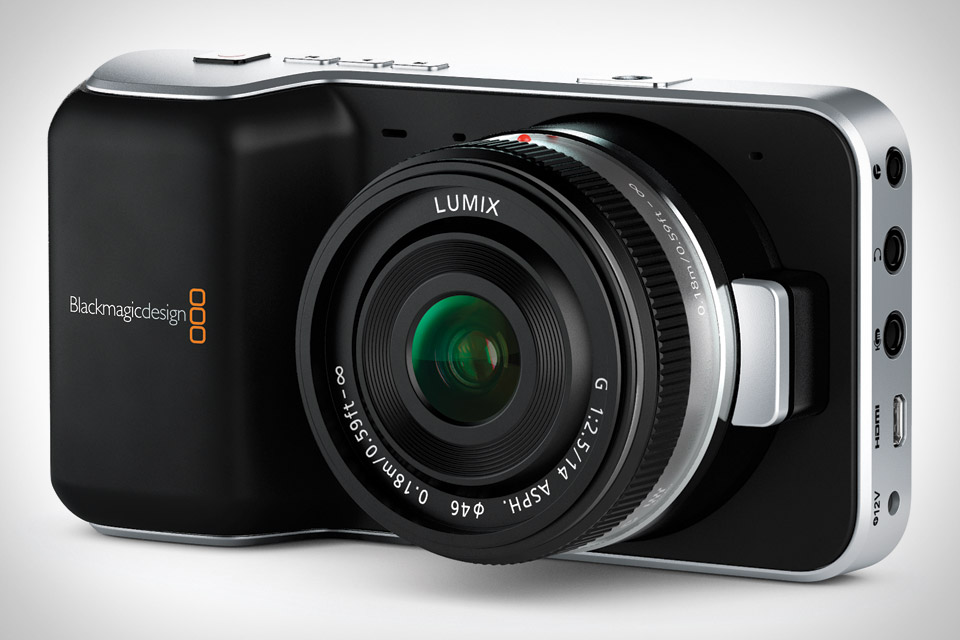The Blackmagic Pocket Cinema Camera exudes quality. Sporting a 12.5mm x 7mm sensor that is said to said to offer 13 stops of dynamic range, equal to quality film cameras, the Pocket Cinema is designed with the videographer in mind, with a full complement of video ports, like external mic, headphone, LANC and HDMI that most of its competitors seem to give short shrift to.
While Sony et al., seem to relish overloading us with barely differentiable video cameras that instead of getting better often sacrifice features in new generations, like the deletion of the touch screen in the Sony NEX-6, compared to the previous NEX-5, Blackmagic is following the Apple strategy: keep it simple and focus on the design.
Blackmagic’s Retina-optimized immediately tells visitors that they’re dealing with a company that understands its target audience. And the Pocket Cinema delivers in spades:
- Resolution – Its 1920×1080 resolution is available at 23.98p, 24p, 25p, 29.97p and 30p frame rates.
- LCD screen – A 3.5”-wide LCD screen is optimized for 16:9-class previewing with an 800×480 resolution.
- Lens mount – Offering an MFT (Micro Four Thirds) lens mount, allows buyers to choose from a large selection of lenses, including Olympus, Panasonic, Zeiss, Sigma, Tokina and others.
- Output – Instead of a proprietary format, the Pocket Camera produces lossless CinemaDNG RAW and Apple ProRes 422 (HQ) 1920×1080 files, which any Final Cut Pro user will be able to edit immediately.
- Ports – Users of the Sony NEX-6, which is generally regarded as one of the best video cameras today, generally bemoan the lack of a dedicated microphone input. The Pocket Cinema offers the ability to remotely control the camera via LANC, use external mics and headphones with standard 3.5mm ports, plus outboard monitoring via Micro HDMI.
B&H Photo & Video promises that the Blackmagic Pocket Cinema Camera will be available on July 25, 2013. We can’t wait! Meanwhile, check out the first known to have been shot with the Pocket Cinema, created by Australian videographer John Brawley. Photo credit: uncrate.

Lainie Liberti is a recovering branding expert, who’s career once focused on creating campaigns for green – eco business, non-profits and conscious business. Dazzling clients with her high-energy designs for over 18 years, Lainie lent her artistic talents to businesses that matter. But that was then.
In 2008, after the economy took a turn, Lainie decided to be the change (instead of a victim) and began the process of “lifestyle redesign,” a joint decision between both her and her 11-year-old son, Miro. They sold or gave away all of of their possessions in 2009 and began a life of travel, service, and exploration. Lainie and her son Miro began their open-ended adventure backpacking through Central and South America. They are slow traveling around the globe allowing inspiration to be their compass. The pair is most interested in exploring different cultures, contributing by serving, and connecting with humanity as ‘global citizens.’
Today Lainie considers herself a digital nomad who is living a location independent life. She and her son write and podcast their experiences from the road at Raising Miro on the Road of Life.









